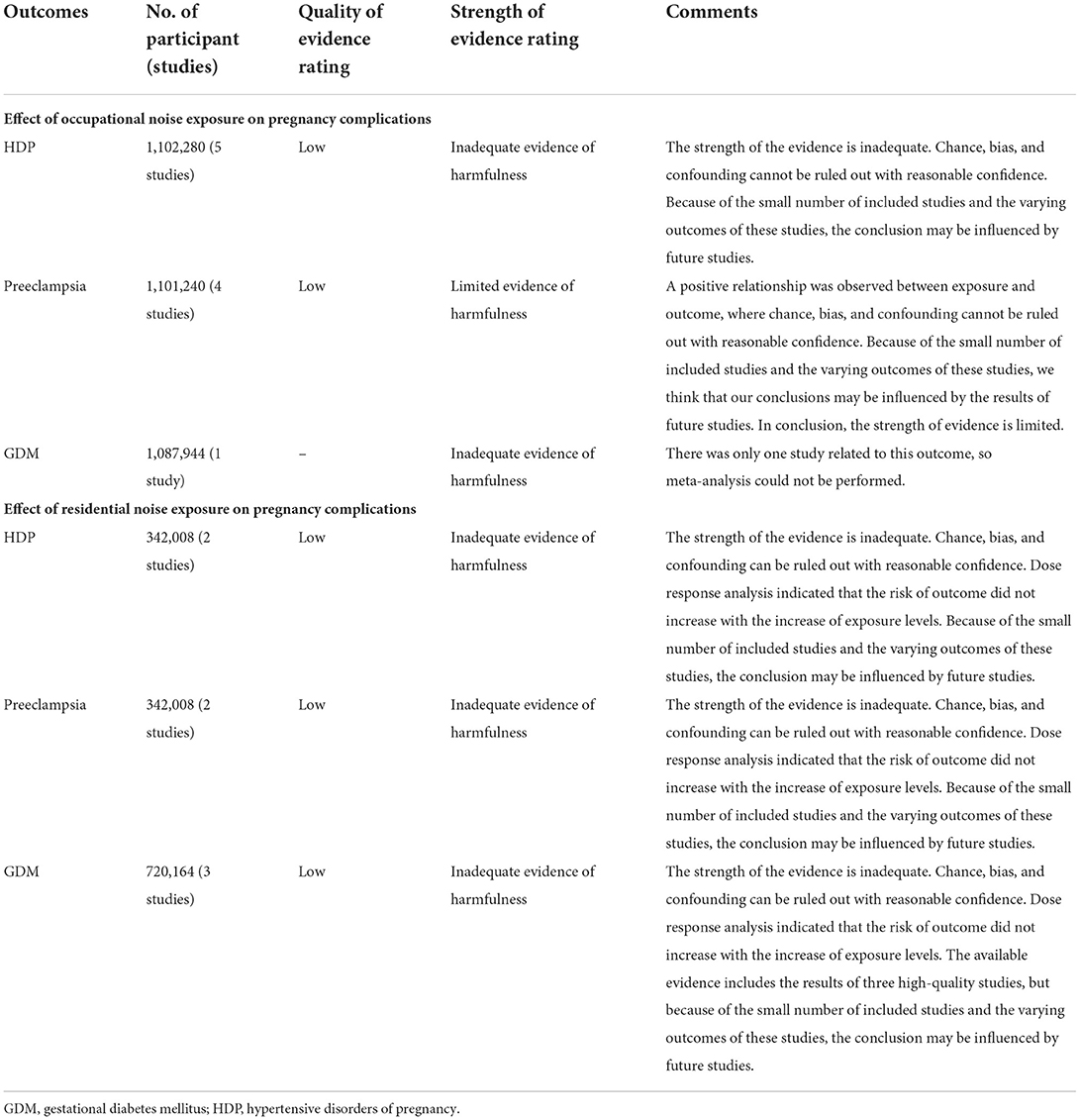Effects of air pollution and noise exposure on occupational hearing loss in oil workers: a prospective cohort study – BMC Public Health

Report on Occupational Health and its Alignment with Sustainable Development Goals
This report analyzes the risk factors associated with Occupational Hearing Loss (OHL) among oil workers, framing the findings within the context of the United Nations Sustainable Development Goals (SDGs). The study highlights critical links between worker health, environmental quality, and socioeconomic conditions, providing evidence-based insights for policies aimed at achieving SDG 3 (Good Health and Well-being), SDG 8 (Decent Work and Economic Growth), SDG 10 (Reduced Inequalities), and SDG 11 (Sustainable Cities and Communities).
Key Findings on Occupational Hearing Loss (OHL) in Oil Workers
Demographic and Socioeconomic Factors: A Link to SDG 3 and SDG 10
A study of 1,179 oil workers revealed an overall OHL incidence of 34.5%. The analysis identified significant socioeconomic disparities that directly impact worker health, underscoring the importance of SDG 10 (Reduced Inequalities) in achieving SDG 3 (Good Health and Well-being).
- Income Disparity: Workers with lower monthly incomes (
- Educational Level: A strong negative correlation was found between education and OHL. The incidence rate for individuals with a bachelor’s degree or higher was 24.1%, whereas it was 42.8% for those with junior high school education or below.
- Lifestyle Factors: Current smokers had a significantly higher OHL rate (40.9%) than non-smokers (32.3%).
- Non-significant Factors: No statistically significant association was found between OHL and gender, diabetes, BMI, or sleep disorders.
Occupational Exposure Factors: A Focus on SDG 8
The investigation into occupational conditions provides critical data for advancing SDG 8 (Decent Work and Economic Growth), which calls for safe and secure working environments for all workers. The findings demonstrate that specific workplace hazards are directly linked to higher rates of OHL.
- Labor Intensity: The incidence of OHL increased in direct proportion to the intensity of labor.
- Shift Work: Workers currently on shifts had a higher OHL rate (37.7%) compared to those who never worked shifts (28.5%) or previously worked shifts (28.9%).
- High-Temperature Exposure: The OHL incidence was 13.3% higher for workers exposed to high-temperature conditions.
- Working Age: Workers with over 30 years of service had an OHL incidence of 49.5%, more than double the rate for those with less than 10 years of service (23.8%).
- Cumulative Noise Exposure: A stark dose-response relationship was observed. The OHL rate in groups exposed to noise levels exceeding 85 dB was 53.0%, nearly three times higher than the rate for the group exposed to levels below 75 dB (19.7%).
Environmental Impact on Worker Health: Air Pollution and OHL (SDG 3 & SDG 11)
This section details the significant association between environmental air pollution and OHL, directly addressing the targets of SDG 11 (Sustainable Cities and Communities), particularly target 11.6 on reducing the environmental impact of cities via air quality, and SDG 3 (Good Health and Well-being), target 3.9 on reducing illnesses from pollution.
Association between Air Pollutants and OHL
Analysis of eight air quality indicators (AQCI, PM2.5, PM10, O3, O3(8h), SO2, NO2, and CO) revealed that each pollutant had a statistically significant association with OHL. This establishes a clear link between poor ambient air quality and adverse health outcomes in the studied workforce. Subsequent analysis focused on six key indicators: AQCI, PM2.5, PM10, SO2, NO2, and CO.
Dose-Response Relationship Analysis
Multivariable analysis confirmed a significant dose-response relationship between air pollutants and OHL risk. The relative risk (RR) for each pollutant decreased after adjustment for other variables but remained significant.
- Sulfur Dioxide (SO2): Showed the most pronounced risk, with an adjusted RR of 1.415 for each 10 µg/m³ increment. The relationship followed an inverted U-shaped curve.
- Nitrogen Dioxide (NO2): Exhibited the second-highest risk, with an adjusted RR of 1.277. The relationship was S-shaped.
- Carbon Monoxide (CO): Showed an almost linear relationship, where higher concentrations corresponded to a higher risk of OHL (adjusted RR = 1.057).
- Particulate Matter (PM2.5 and PM10): Displayed U-shaped and initially rapid increase curves, respectively, indicating that risk rises significantly after certain concentration thresholds are crossed.
Compounded Risks: Noise and Air Pollution Interaction (SDG 3, SDG 8, & SDG 11)
The study further explored the synergistic effects of combined exposure to occupational noise and environmental air pollution. This integrated approach is vital for developing comprehensive health and safety strategies that align with SDG 3, SDG 8, and SDG 11.
Dose-Response Relationship for Noise Exposure
A significant dose-response relationship between noise exposure and OHL was confirmed across all analytical models, even after adjusting for demographic, occupational, and air pollution factors. The risk of OHL increased with each level of noise exposure, with the highest noise group (≥85 dB) consistently showing the strongest risk association (RR ranging from 1.950 to 2.695). The relationship was nonlinear and followed an S-shaped curve, indicating complex risk dynamics.
Analysis of Synergistic Effects
Interaction analysis revealed that certain air pollutants significantly amplify the health risks posed by noise exposure.
- Significant Synergistic Effects: The combined exposure to noise and certain pollutants demonstrated a multiplicative effect on OHL risk. The interaction was statistically significant and robust for:
- Air Quality Comprehensive Index (AQCI)
- Nitrogen Dioxide (NO2)
- Carbon Monoxide (CO)
- No Significant Interaction: The interactions between noise and PM2.5, PM10, and SO2 were not statistically significant, suggesting these pollutants may affect hearing health through independent pathways.
Additive Interaction and Sensitivity Analysis
Further analysis confirmed the interaction findings, providing robust evidence for policy-making.
- Additive Interaction: A strong synergistic effect was confirmed between high noise exposure (≥80 dB) and both AQCI and NO2. This supports a biological interaction mechanism where the combined effect is greater than the sum of the individual effects.
- Sensitivity Analysis: The analysis confirmed that the synergistic effects of AQCI and NO2 with noise are highly robust. The effects of PM pollutants and SO2 were found to be more complex and dependent on specific concentration thresholds, highlighting the need for nuanced protective strategies that consider nonlinear effects.
Conclusion and Implications for Sustainable Development
The findings establish that Occupational Hearing Loss in oil workers is a complex public health issue driven by an interplay of socioeconomic factors, occupational hazards, and environmental pollution. This research provides compelling evidence that progress towards the 2030 Agenda for Sustainable Development requires an integrated approach to worker and environmental protection.
- For SDG 3 and SDG 10: Policies must address the health inequalities faced by lower-income and less-educated workers.
- For SDG 8: Stricter occupational safety standards are required to mitigate exposure to noise, high temperatures, and intense labor.
- For SDG 11: Efforts to improve air quality will not only benefit the general population but also reduce specific occupational health risks.
Addressing the synergistic effects of noise and air pollution is critical. Protective strategies must account for these combined risks to effectively safeguard worker health and promote sustainable industrial practices.
Analysis of Sustainable Development Goals in the Article
1. Which SDGs are addressed or connected to the issues highlighted in the article?
- SDG 3: Good Health and Well-being: The article’s central theme is Occupational Hearing Loss (OHL), a specific health condition. It investigates the incidence rates and various risk factors, including occupational hazards and environmental pollution, directly aligning with the goal of ensuring healthy lives.
- SDG 8: Decent Work and Economic Growth: The study focuses on the health and safety of oil workers. It analyzes how occupational factors like “labor intensity, shift work, high-temperature exposure, working age, and cumulative noise exposure” contribute to OHL, which relates to the goal of promoting safe and secure working environments.
- SDG 10: Reduced Inequalities: The article highlights disparities in health outcomes based on socio-economic status. It explicitly states that OHL incidence is higher among individuals with “lower monthly incomes” and lower “education level,” pointing to inequalities in health and well-being.
- SDG 11: Sustainable Cities and Communities: A significant portion of the article is dedicated to analyzing the “association between environmental air pollution and OHL.” It examines the impact of pollutants like PM2.5, PM10, SO2, and NO2 on health, which is a key concern for creating sustainable and healthy living environments.
2. What specific targets under those SDGs can be identified based on the article’s content?
-
Target 3.9: By 2030, substantially reduce the number of deaths and illnesses from hazardous chemicals and air, water and soil pollution and contamination.
- The article directly supports this target by investigating illnesses (OHL) resulting from exposure to air pollution (PM2.5, PM10, SO2, NO2, CO) and noise pollution. It quantifies the increased risk, stating, “SO2 showed the most pronounced risk increase with each 10 µg/m3 increment, with Relative Risks (RR) of 1.661 in Model 1 and 1.415 in Model 2.”
-
Target 8.8: Protect labour rights and promote safe and secure working environments for all workers.
- This target is addressed through the detailed analysis of occupational hazards. The article identifies that factors inherent to the work environment, such as high noise levels, are major contributors to OHL. It notes that “the incidence rate of OHL in groups exposed to noise levels exceeding 85 dB (53.0%) was significantly higher than in all lower exposure groups.” This highlights the need for safer working conditions.
-
Target 10.3: Ensure equal opportunity and reduce inequalities of outcome.
- The article provides clear evidence of inequalities in health outcomes. It shows that the risk of OHL is not distributed equally, finding that the “incidence rate of OHL at 38.7% for the income group
-
Target 11.6: By 2030, reduce the adverse per capita environmental impact of cities, including by paying special attention to air quality.
- This target is relevant due to the article’s focus on the health impacts of poor air quality. The study measures the “average exposure levels” of various pollutants like “PM2.5 (70.3 µg/m3)” and “PM10 (122.6 µg/m3)” and links them directly to adverse health effects (OHL), underscoring the importance of managing air quality.
3. Are there any indicators mentioned or implied in the article that can be used to measure progress towards the identified targets?
-
Incidence rate of Occupational Hearing Loss (OHL).
- This is a primary indicator used throughout the article to measure the prevalence of a non-fatal occupational illness. The overall incidence rate is stated as “34.5%.” This can be used to track progress for Target 3.9 and Target 8.8.
-
Incidence rate of OHL stratified by exposure to occupational hazards.
- The article provides specific rates based on different levels of occupational exposure, which can measure the effectiveness of safety interventions (Target 8.8). For example, it compares the OHL rate for workers exposed to noise “>85 dB (53.0%)” versus those exposed to “
-
Incidence rate of OHL stratified by socio-economic factors.
- This indicator directly measures inequalities in health outcomes (Target 10.3). The article provides data points such as the OHL rate for the lowest income group (“38.7%”) versus the highest (“25.6%”), and for the lowest education group (“42.8%”) versus the highest (“24.1%”).
-
Annual mean levels of specific air pollutants.
- The article explicitly measures and reports the average exposure levels for several key pollutants, which directly corresponds to indicator 11.6.2. It states the levels for “PM2.5 (70.3 µg/m3), PM10 (122.6 µg/m3), SO2 (18.1 µg/m3), and NO2 (41.2 µg/m3).”
-
Morbidity rate attributable to air and noise pollution.
- While the official SDG indicator (3.9.1) focuses on mortality, the article provides detailed data on morbidity (illness) attributable to pollution. It uses Relative Risk (RR) to quantify the increased risk of OHL from exposure to pollutants like SO2, NO2, and noise, serving as a direct measure for Target 3.9.
4. Table of SDGs, Targets, and Indicators
| SDGs | Targets | Indicators |
|---|---|---|
| SDG 3: Good Health and Well-being | 3.9: Substantially reduce illnesses from hazardous chemicals and air/noise pollution. |
|
| SDG 8: Decent Work and Economic Growth | 8.8: Promote safe and secure working environments for all workers. |
|
| SDG 10: Reduced Inequalities | 10.3: Ensure equal opportunity and reduce inequalities of outcome. |
|
| SDG 11: Sustainable Cities and Communities | 11.6: Reduce the adverse per capita environmental impact, paying special attention to air quality. |
|
Source: bmcpublichealth.biomedcentral.com

What is Your Reaction?
 Like
0
Like
0
 Dislike
0
Dislike
0
 Love
0
Love
0
 Funny
0
Funny
0
 Angry
0
Angry
0
 Sad
0
Sad
0
 Wow
0
Wow
0













































































